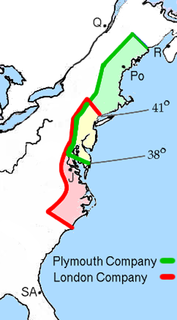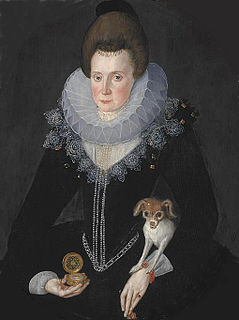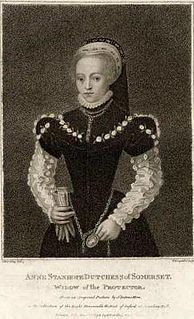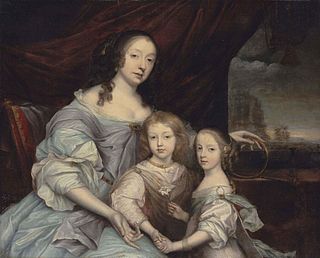| Frances Stuart | |
|---|---|
| Duchess of Richmond Duchess of Lennox Countess of Hertford | |
 Frances Howard as Countess of Hertford, by Marcus Gheeraerts the Younger. | |
| Full name Frances Howard | |
| Born | 27 July 1578 |
| Died | 8 October 1639 (aged 61) |
| Noble family | Howard |
| Spouse(s) | Henry Pranell Edward Seymour, 1st Earl of Hertford Ludovic Stewart, 2nd Duke of Lennox |
| Father | Thomas Howard, 1st Viscount Howard of Bindon |
| Mother | Mabel Burton |


Frances Stewart, Duchess of Richmond and Lennox, Countess of Hertford, née Howard (27 July 1578 – 8 October 1639) [1] was the daughter of a younger son of the Duke of Norfolk. An orphan of small fortune, she rose to be the only duchess at the court of James I of England. She married the son of a London alderman who died in 1599, leaving her a wealthy widow at a young age. She became, for 20 years, the third wife of the ageing Edward Seymour, 1st Earl of Hertford, nephew of Jane Seymour, third queen consort of Henry VIII. Within months of Edward's death she married a cousin of James I, Ludovic Stewart, 2nd Duke of Lennox and 1st Duke of Richmond. One of the great beauties of the Jacobean court, she was also the patron of Captain John Smith of the Virginia Colony.

Thomas Howard, 3rd Duke of Norfolk, was a prominent Tudor politician. He was an uncle of two of the wives of King Henry VIII of England, namely Anne Boleyn and Catherine Howard, both of whom were beheaded, and played a major role in the machinations affecting these royal marriages. After falling from favour in 1546, he was stripped of the dukedom and imprisoned in the Tower of London, avoiding execution when King Henry VIII died on 28 January 1547.

A court is an extended royal household in a monarchy, including all those who regularly attend on a monarch, or another central figure. Hence the word court may also be applied to the coterie of a senior member of the nobility.
An alderman is a member of a municipal assembly or council in many jurisdictions founded upon English law. The term may be titular, denoting a high-ranking member of a borough or county council, a council member chosen by the elected members themselves rather than by popular vote, or a council member elected by voters.



















